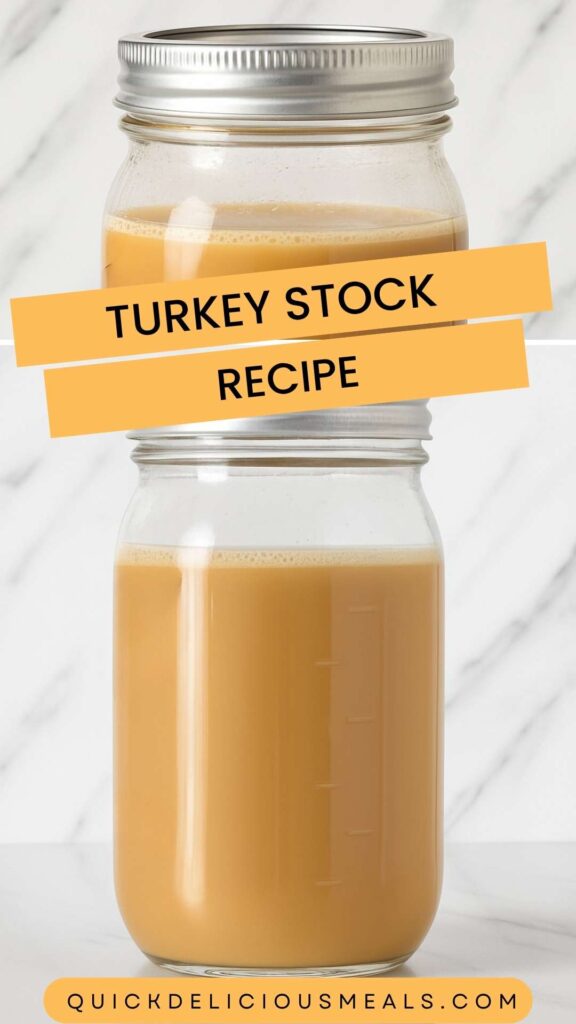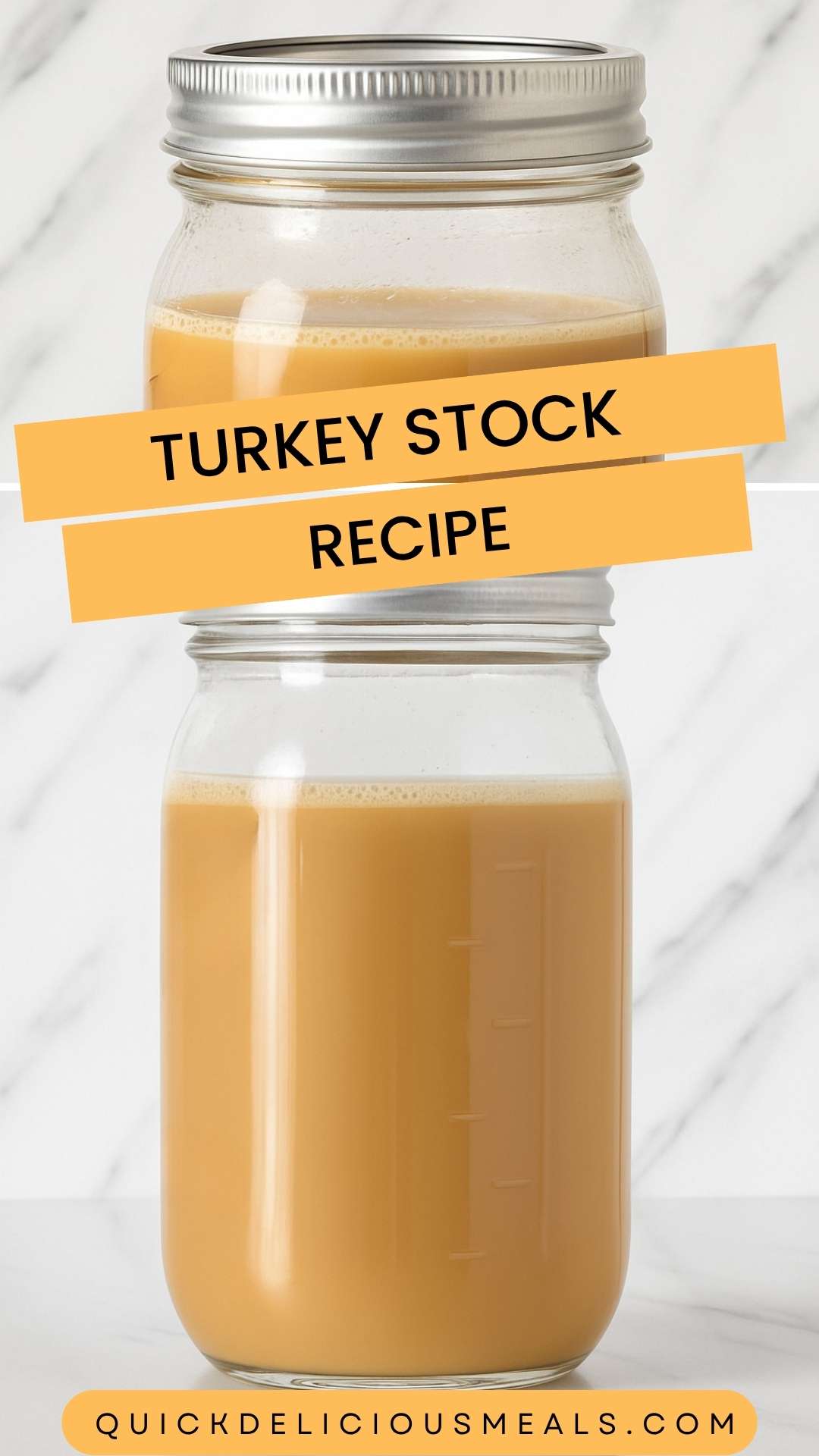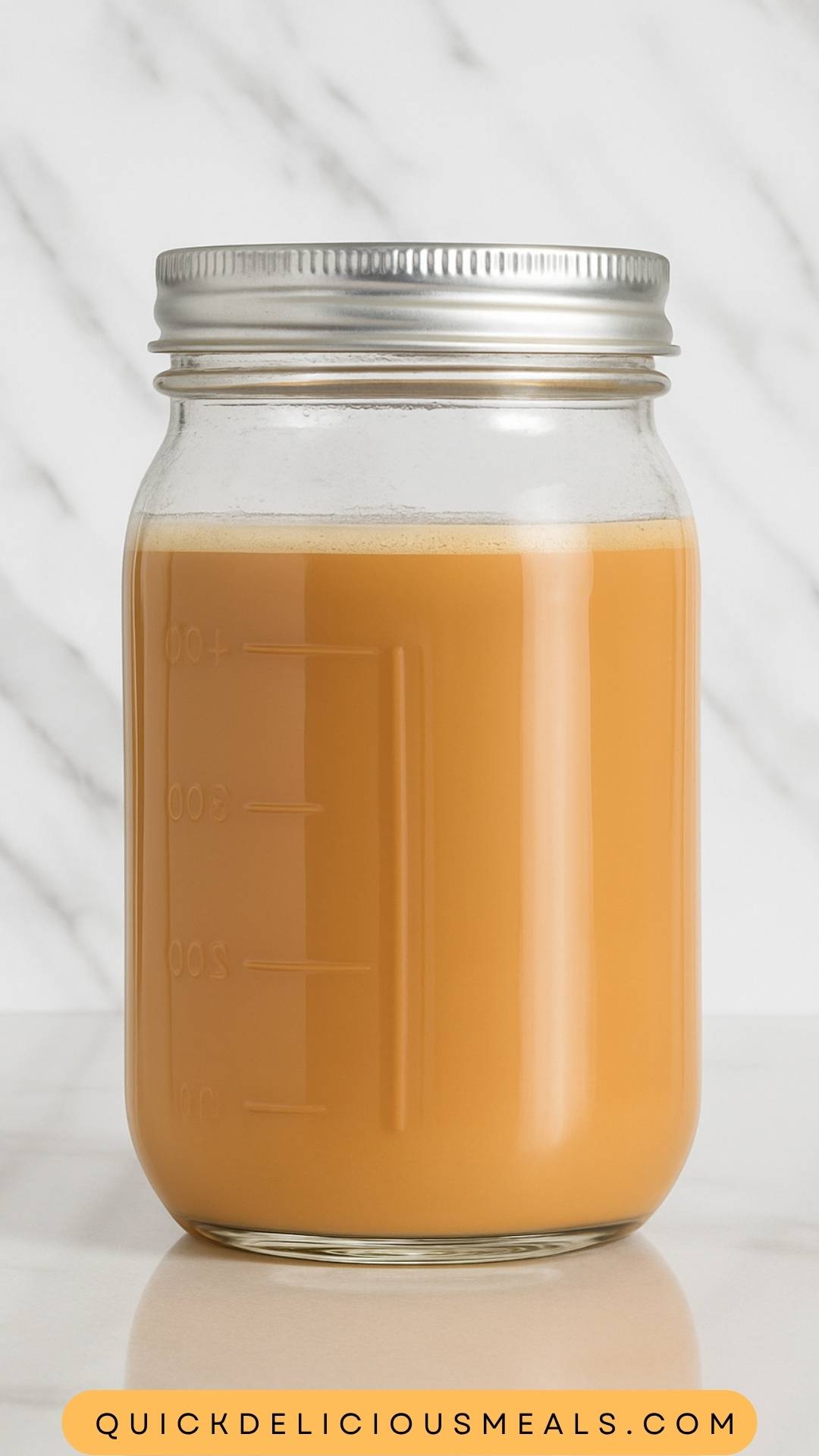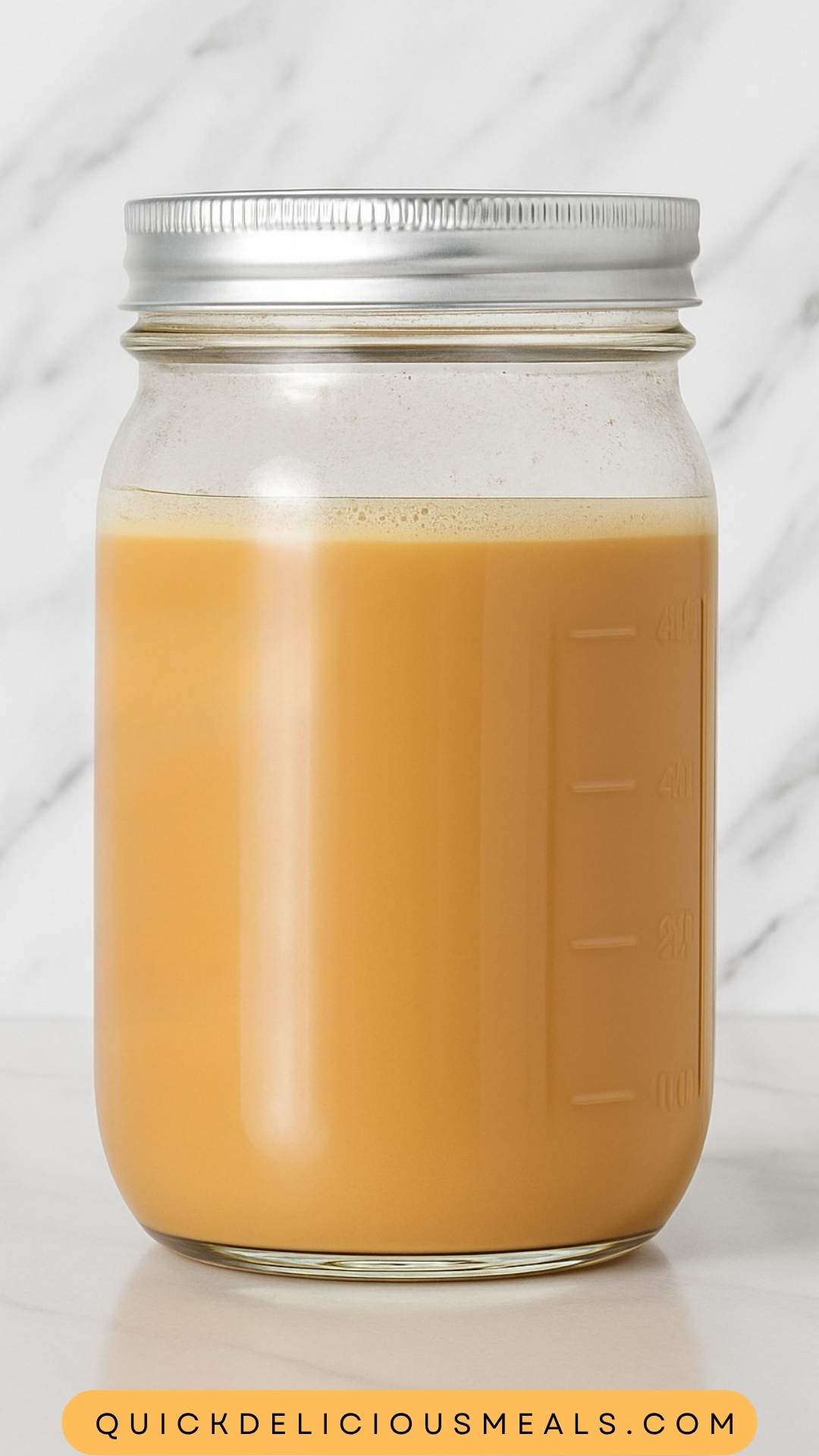Nutrition Facts
Servings 6
- Amount Per Serving
- Calories 2kcal
- % Daily Value *
- Sodium 4mg1%
* Percent Daily Values are based on a 2,000 calorie diet. Your daily value may be higher or lower depending on your calorie needs.

Thanksgiving leftovers often come with a treasure: the carcass of a delicious turkey. And while it may seem like just a pile of bones, it is a gateway to creating something wonderful—Turkey Stock.
I remember the first time I made turkey stock; I was pleasantly surprised by how easy it was and how much flavor it added to my soups and sauces. Let's dive into what turkey stock is, why it’s worth making, and how to create your own.

At its core, turkey stock is a rich liquid made by simmering the leftover carcass of a turkey, along with vegetables and seasonings. It's not just any broth; it's packed with flavor, nutrients, and that comforting essence we often associate with home-cooked meals.
While many might buy pre-made stock, I can assure you that nothing compares to the aromatic, savory goodness that can come from your kitchen—not to mention the satisfaction of reducing waste.
I’ve since become a firm believer in making stock from leftover poultry. Turkey stock can form the foundation for soups, sauces, and gravies, lending them depth and character you just can't achieve with store-bought versions. It's like taking a simple dish and elevating it to something special.
Not convinced yet? Let me share a few reasons why this stock deserves a spot in your kitchen:
1. Simplicity: You don’t need fancy tools or culinary expertise to whip up a batch.
2. Flavors: The combination of turkey bones and vegetables creates a complex flavor profile.
3. Health Benefits: Stocks are typically rich in collagen, which can support joint health and skin elasticity.
4. Budget-Friendly: Using leftovers is a smart way to save money while maximizing your meal's potential.
5. Versatility: Use it as a base for soups, risottos, or sauces. The possibilities are endless!
Let’s lay out the important elements for making turkey stock. You likely have these items already in your kitchen:
These ingredients can vary based on your preferences, but this combination is a great starting point.

Creating turkey stock is straightforward. Here’s how you can do it in several clear steps:
Take a moment to gather all your ingredients. You’ll want to ensure everything is fresh. Make sure to have a large stock pot on hand, a fine mesh strainer, and storage containers for the finished product.
Chop the carrots, celery, and onions into roughly equal pieces. There’s no need for precision here since you’ll be straining the stock later. Just make sure they’re about uniform in size to promote even cooking.
With all the ingredients prepped, toss the turkey carcass into the stock pot. Follow it up with the chopped vegetables, garlic, and peppercorns. Make sure the carcass has as much meat on it as possible. Don’t worry about getting every little bit—the key is extracting flavor.
Fill the pot with water until everything is covered by about two inches. This will allow for ample simmering. Generally, I find between 10-12 cups of water works well.
Put the pot on the stove over high heat and bring everything to a boil. Once it starts boiling, reduce the heat to low so it can simmer. You’ll know it’s ready when you see small bubbles gently breaking the surface.
Allow the stock to simmer for at least 4 hours. If you have the time, letting it simmer for up to 8 hours will yield even richer flavors. Just keep an eye on it, adding water if you notice it getting too low.
Once the stock is ready, carefully remove it from the heat. Pour the liquid through a fine mesh strainer into another pot or a large bowl. Discard the solids—those veggies and bones have done their job!
Let the stock cool to room temperature before transferring it to airtight containers. You can refrigerate it for a few days or freeze it for extended use.
Here are some tried-and-true tips that I’ve gathered over the years:
Absolutely! Turkey stock is very versatile when it comes to storage.
Turkey stock can be the base for numerous delicious dishes. Here are a few ideas:
You can customize your turkey stock in several ways:

Making turkey stock from scratch is one of the easiest and most rewarding kitchen endeavors. Not only does it elevate your culinary creations, but it’s also an eco-friendly way to use every part of your holiday turkey.
Whether you’re whipping up a comforting soup or enriching a sauce, your homemade stock will be a testament to the delicious flavors of a home-cooked meal.
So, the next time you have a turkey carcass sitting in your fridge, don’t let it go to waste. Grab those veggies, get that pot simmering, and savor the satisfying taste of homemade turkey stock. You'll be amazed at the difference it makes—and your future dishes will thank you!
Thanksgiving leftovers often come with a treasure: the carcass of a delicious turkey. And while it may seem like just a pile of bones, it is a gateway to creating something wonderful—Turkey Stock.
Servings 6
* Percent Daily Values are based on a 2,000 calorie diet. Your daily value may be higher or lower depending on your calorie needs.